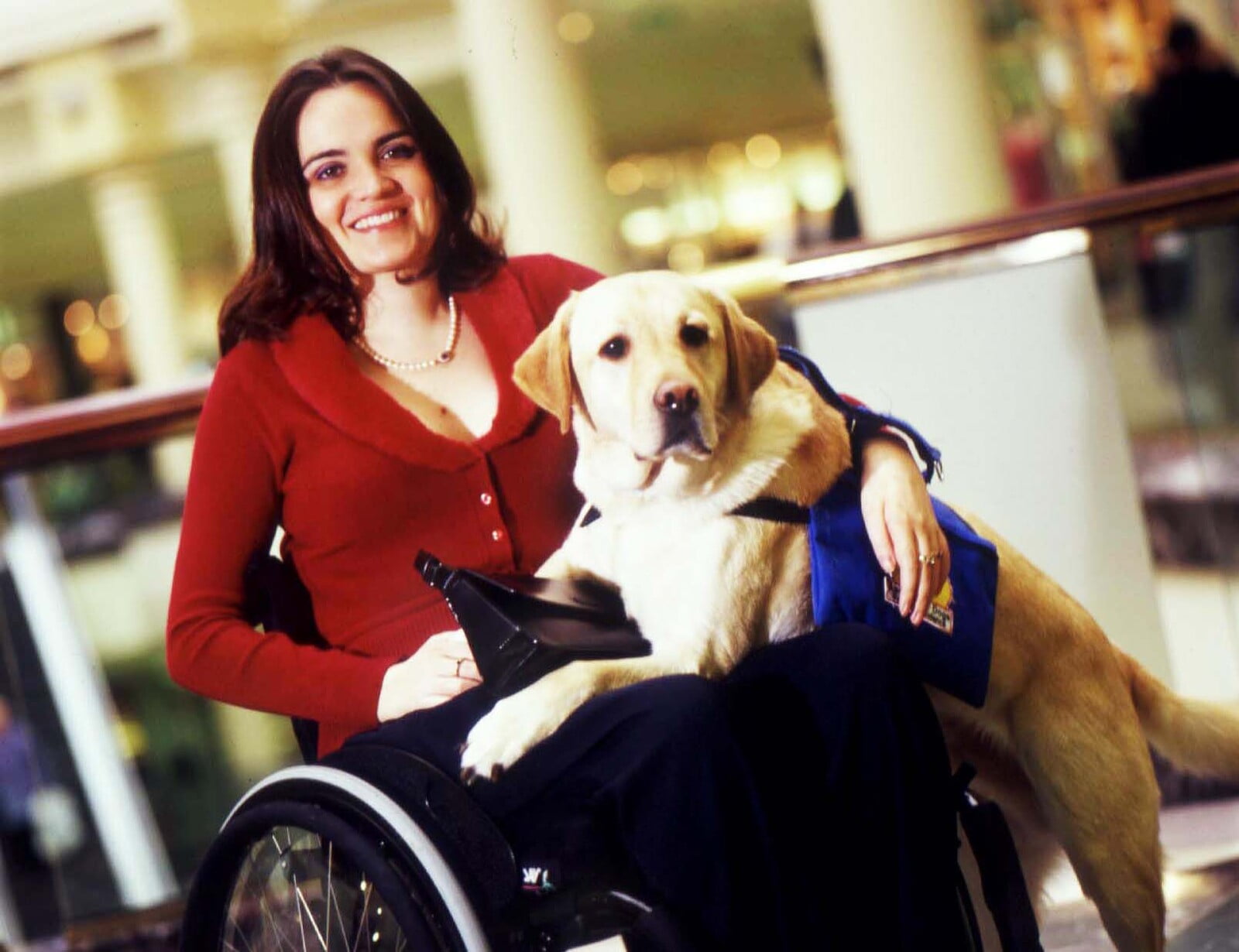In 2000, Tanya Clarke got a call from a coordinator at the Transport Accident Commission. They wanted to know if she was interested in applying for an assistance dog, as part of a pilot program the TAC was running.
Tanya had been living with quadriplegia from a complete C5 spinal cord injury since 1993. Her family had always had dogs, and Tanya grew up a dog lover. But before that call, she’d never heard of an assistance dog.
She discovered that assistance dogs were trained to perform tasks that would help their owners. A dog might help someone with impaired vision, as guide dogs do, or might help someone with a physical disability – for example, by picking up dropped items, pressing lift buttons, opening doors, or alert-barking for assistance.

The training also prepares assistance dogs to pass the Public Access Test (PAT). PAT accreditation allows the dogs to accompany their owners in places like aeroplane cabins and restaurants.
Go time
Tanya decided she was interested. She applied, and was accepted into the program. Next was a two week course where she would be placed with a dog, and learn how to handle and command them.
“The training was full on, but fun,” Tanya recalls. “The dogs knew their role but the recipients had to be trained.”
Tanya was paired with a golden labrador named Harry, and life hasn’t been the same since. Tanya says she had a soft spot for Harry as soon as she met him.
“It was his attitude,” she remembers. “There was a bit of spunk about him.”
Tanya’s injury left her with limited arm movement, and no hand function.
“When Harry arrived, he became my hands,” says Tanya.

A not so little helper
If Tanya dropped something, Harry could pick it up and put it on her lap. He could be commanded to open the fridge, and would even get things out for her. He’d open doors, and press buttons for pedestrian lights and elevator lifts – making buildings accessible to Tanya.
For the first time, Tanya could open the front door of her house independently – with assistance from Harry.
And she could take Harry shopping.
“Before Harry, I’d been in a chair for seven years, and shopping at a supermarket wasn’t something I could do independently,” Tanya reveals.
“Along came Harry, and supermarket shopping became easier. I’d knock things off the shelf, he’d pick them up and put them in the basket on my lap.
“Suddenly I had the independence of shopping for myself.”

The personality that had attracted Tanya to Harry serially charmed many others. Harry even endeared himself to the Canadian singer Michael Bublé, who had been on tour in Australia.
Harry and the Crooner
“I was with a friend at a Bublé concert,” Tanya recalls.
“The dogs have a command ‘speak’, where they bark. They’re trained not to bark, normally.
“At the end of a song, as the applause was dying down, I told Harry to speak to show his appreciation.
“Michael Bublé heard him, and was saying ‘Oh, there’s a dog!’ And then Harry and Michael would keep speaking to each other.
“So about three quarters of the way through the show, he came offstage and met Harry. We were in the newspaper the next day.”
Twenty-one years later, Tanya’s on her third assistance dog, Ryder. Before Ryder, she had Junior, a golden retriever.
“Harry was the gregarious rockstar, and Junior was loving and handsome – and knew it. Ryder is a combination of both.”

Harry and Junior each retired from official service when aged about 10, but kept living with Tanya. They no longer had public access, but they still worked for her at home.
“I was devastated when each of them died, it was like losing a family member,” Tanya says. “They gave me independence, and improved my life immensely. But the companionship they offered – that was huge.
“Having an assistance dog where you are together 24/7 creates a bond that is immeasurable. You can speak to them, laugh with them, cry with them. They don’t judge you; they love you unconditionally – in the good times and bad.”
Assistance Dogs Australia
Harry, Junior and Ryder were each trained by the not-for-profit organisation Assistance Dogs Australia.
It costs more than $40,000 to train an assistance dog, and Assistance Dogs Australia gives them to people free of charge. They receive no government funding and rely on private donations and corporate sponsorship.

Some dogs are funded by the TAC or the NDIS – although Tanya, who is an ambassador for Assistance Dogs Australia, believes NDIS funding is rare.
Growing demand for assistance dogs, combined with limited funding, has pushed the average wait time for a new applicant beyond 18 months, according to Tanya. With Covid-19 making it difficult to place new dogs, new applications aren’t being accepted at the moment.
When they reopen applications, Tanya has a clear message for anyone interested:
“Go for it! These dogs not only help with your level of independence, they have improved the way I feel about myself and are the very best friend anyone could ever wish for.”
Visit assistancedogs.org.au for more info.
- November 22, 2021




